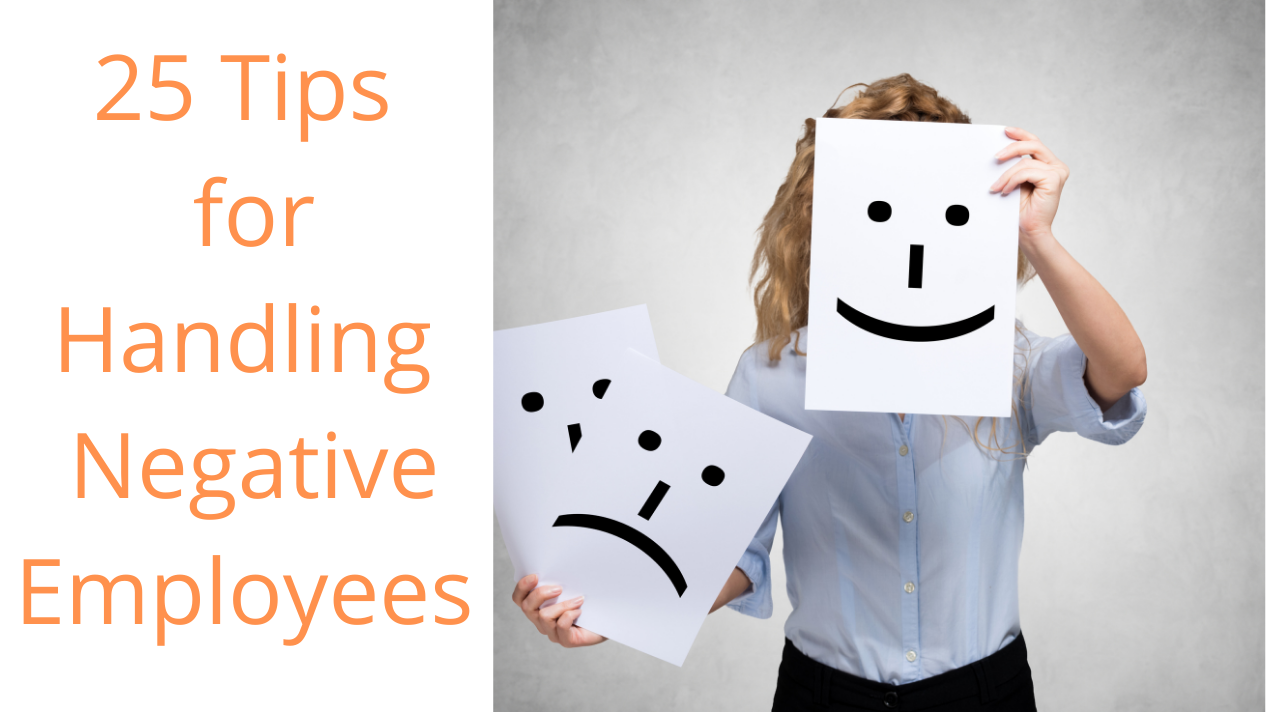Negativity in the workplace can be like a virus, spreading quickly and impacting morale, engagement and productivity As a leader, it’s crucial to understand the root causes of negativity so you can take action to create a thriving, positive culture
Common triggers of negativity include overwhelming workloads leadership concerns, job insecurity lack of recognition, boredom and valid complaints. By addressing these issues proactively and openly, you can dramatically improve satisfaction and performance.
Here are the top causes of negativity among employees and effective strategies to overcome them
Excessive Workloads
When employees feel like work is an endless, uphill battle, negativity takes hold. People get stressed and overwhelmed when asked to take on too much. This leads to irritation, exhaustion and pessimism.
To combat workload-induced negativity:
-
Review workloads regularly and redistribute responsibilities evenly. Don’t overburden star performers.
-
Prioritize tasks and projects. Eliminate non-essential work.
-
Hire additional staff if needed to prevent burnout.
-
Offer flexibility like remote work and adjusted hours. Give people more control over their schedule.
-
Encourage taking breaks, unplugging and recharging. Model this behavior yourself.
Leadership Concerns
Disengaged, unreliable or incompetent leaders breed negativity quickly. Without inspiration and trust, teams become cynical, hopeless and resentful.
Tips for leaders to reduce negativity:
-
Communicate often and with transparency. Don’t leave people guessing.
-
Demonstrate you care about more than just profits. Invest in development.
-
Model accountability. Take ownership when things go wrong instead of blaming.
-
Align actions with company values. Walk the talk.
-
Praise and recognize team members frequently for their efforts.
Job Insecurity
Fearing potential layoffs or restructuring creates anxiety and bitterness in employees. People who feel their job is at risk disengage, become guarded and focus on self-preservation.
Create stability by:
-
Being candid about the company’s financial health and outlook. Share context.
-
Investing in upskilling existing employees versus hiring externally when possible.
-
Offering opportunities to expand roles versus downsizing.
-
Giving ample notice and transition support with organizational changes.
-
Holding staff appreciation events and gestures to reinforce value.
Lack of Recognition
When hard work and dedication go unacknowledged, employees feel deflated. Undervalued team members withdraw effort and become skeptical of leadership.
Combat lack of recognition with:
-
Sincere praise in team meetings for milestones achieved.
-
One-on-one kudos for contributions that may be behind the scenes.
-
Written notes or small gifts to celebrate wins.
-
Cross-functional recognition programs among peers.
-
Rewards like gift cards, events, special assignments or paid time off.
Workplace Boredom
Monotony and lack of fulfilling work breeds discontent. Employees who find their roles stale or limiting quickly disengage and adopt negative mindsets.
Counter boredom by:
-
Automating repetitive tasks to allow more meaningful work.
-
Offering cross-training or stretch assignments.
-
Accommodating lateral moves to roles that seem more intriguing or suitable.
-
Incorporating volunteer projects for a sense of purpose.
-
Supporting learning new skills and professional development.
Valid Complaints
Sometimes negativity arises from legitimate shortcomings in company policies, culture or leadership. Don’t dismiss these issues or you’ll worsen resentment.
Address valid concerns by:
-
Having an open door policy and making yourself approachable.
-
Probing complaints respectfully to understand root issues.
-
Apologizing sincerely when problems are revealed.
-
Collaborating on solutions and improvements.
-
Following through on promises. Regain trust.
With empathy, active listening and a willingness to take action, leaders can turn around even ingrained negativity. By cultivating transparent, compassionate and engaging cultures, companies tap into the discretionary effort and brilliance of their people.

Your teams are too big
Amazons two-pizza rule, attributed to CEO Jeff Bezos, suggests that if there are more than two pizzas at the meeting, the team is too big.
Dr Belbins ideal team size is four – any bigger and it slows things down and precludes important decision-making. Keeping the numbers even means that decisions have to be made by majority rule, rather than one person having a casting vote.
We can’t fix the photocopier or restock the vending machine, but here are 10 problems we know Belbin Team Roles can tackle!
We all have preferred ways of working and interacting with others (we call these Team Roles), but sometimes we can become set in our ways.
When this happens, we miss out on the opportunity to learn and grow. As well as identifying preferred Team Roles, Belbin reveals your “manageable roles” – latent strengths which require you to step a little outside your comfort zone – and offers advice on how to cultivate these to best advantage.
How to start changing an unhealthy work environment | Glenn D. Rolfsen | TEDxOslo
How to reduce workplace negativity?
Give employees a voice by letting them express their opinions on working conditions, benefits, job requirements, overtime hours, and other areas that matter to them. Then, be available and listen and take action to address the issues employees raise. Being proactive is the key to minimizing workplace negativity.
How do you deal with negative employees?
Managers of negative employees can be empathetic and supportive while also working to reduce the negativity. Practical strategies include the following: Have private discussions. Start by having a private conversation with the negative employee. Use active listening and empathy to understand their concerns and motivations.
What causes negativity at work?
The leading causes of negativity at work include the following: Excessive workload. Too much work leads to a poor work-life balance and burnout. Employees no longer enjoy coming into work, and it shows in every aspect of their work. Lack of confidence in leadership.
Is negativity spreading in the workplace?
Many employers strive to provide a positive workplace that helps employees experience job satisfaction. However, it’s possible for negativity to spread in the workplace, and it’s important for managers to identify and correct it, allowing for more productivity, motivation and collaboration for all employees and teams.